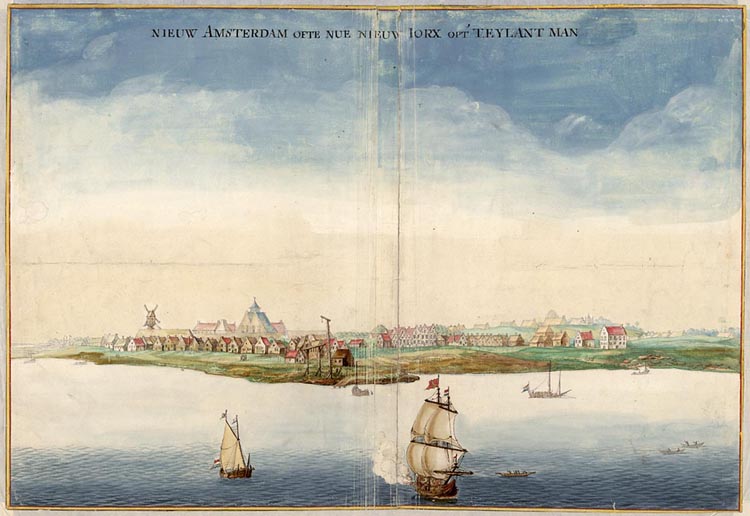-
300th Anniversary from foundation of New York
United States of America 1953.11.20
In issue: Stamp(s): 1
-
Number by catalogue: Michel: 647 Yvert: 578
Perforation type: 11x10 ½
Subject:
3 cents. Sailing sheep on spot-check at a city New Amsterdam* (1653). On a background - silhouettes of modern skyscrapers.
Additional:
*New Amsterdam (Dutch: Nieuw Amsterdam) was a 17th-century Dutch colonial settlement that later became New York City.
The town developed outside of Fort Amsterdam on Manhattan Island in the New Netherland territory (1614–1674) which was situated between 38 and 42 degrees latitude as a provincial extension of the Dutch Republic as of 1624. Provincial possession of the territory was accomplished with the first settlement which was established on Governors Island in 1624. A year later, in 1625, construction of a citadel comprising Fort Amsterdam was commenced on the southern tip of Manhattan and the first settlers were moved there from Governors Island
The city, situated on the strategic, fortifiable southern tip of the island of Manhattan was to maintain New Netherland's provincial integrity by defending river access to the company's fur trade operations in the North River, later named Hudson River. Furthermore, it was entrusted to safeguard the West India Company's exclusive access to New Netherland's other two estuaries; the Delaware River and the Connecticut River. Fort Amsterdam was designated the capitol of the province in 1625 and developed into the largest Dutch colonial settlement of the New Netherland province, now the New York Tri-State Region, and remained a Dutch possession until September 1664, when it fell provisionally and temporarily into the hands of the English.
The Dutch Republic regained it in August 1673 with a fleet of 21 ships, renaming the city New Orange. New Netherland was ceded permanently to the English in November 1674 by treaty.
The 1625 date of the founding of New Amsterdam is now commemorated in the official Seal of New York City (formerly, the year on the seal was 1664, the year of the provisional Articles of Transfer, ensuring New Netherlanders that they "shall keep and enjoy the liberty of their consciences in religion", negotiated with the English by Petrus Stuyvesant and his council).
Illustration: "Gezicht op Nieuw York" by Johannes Vingboons (1664)
Also see FDC
Topics: Mills within the landscapes Windmills


1954-s-logo.jpg)